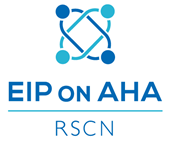Good Practice on health tourism in Southern France
One of the strengths of MACVIA-LR is the sound link between hydrotherapy/balneotherapy health resorts and the teaching hospitals of the Region. The MACVIA-LR_ project also aims to incorporate all possible aspects of medicine—including non-pharmacologic approaches—in order to maintain health and prevent NCDs.
This approach includes hydrotherapy and balneotherapy which can be of great importance if health promotion strategies are considered and if the FEMTEC concept is followed. This concept was developed by Santuari and Solimene who propose to focus on prevention and health promotion rather than the concept of cure.
Balneotherapy in musculoskeletal diseases and phlebology
Balneotherapy has a scientific evidence-based effect on various systems of the body and in musculoskeletal diseases in particular. In the vast majority of places, treatment is centred only around the benefits of balneotherapy although it has been recommended to consider its combination with education. The Secretary General of FEMTEC, a member of the Global Alliance against Chronic Respiratory Diseases (World Health Organisation), recently wrote a statement considering balneotherapy as an important alternative medicine to promote AHA.
Balneotherapy at Balaruc-les-Bains
The climatic health resort of Balaruc-les-Bains (in the Hérault department) was scientifically recognized in the 16th century for the quality of its thermal water and for its dual therapeutic orientation in rheumatology and phlebology. The centre welcomes over 46,000 spa users per year.
Balaruc-les-Bains focusses on musculoskeletal diseases and chronic venous insufficiency of the lower limbs. A falls prevention programme exists in MACVIA-LR, and the development of the falls screening programme for subjects with musculosketal diseases is important in order to propose simple but efficient measures to reduce falls.
The new centre is spread over 16,000m2 and includes 5 pools for group therapy in rheumatology and phlebology. It also provides individual hydrotherapy treatment of which 4 sectors specialize in the application of thermal mud.
In the phlebology sector, a walking corridor has been specially designed to alleviate circulatory disorders in the lower limbs and to increase joint mobility and balance. Walking on a carpet of tiny air bubbles stimulates proprioception and microcirculation. It also increases venous return by the calf muscle pump which accelerates when walking against the current. Balance therapy using an inclined surface (uphill and downhill) of pebbles or tiles-depending on the pathology-enables stimulation of the plantar arch and venous pump, relaxation of the ankles as well as an improved physical perception of the ground.
Falls prevention combining balneotherapy and education
The new centre combines the most effective balneotherapy methods with therapeutic education. A new falls prevention initiative has been set up and a pilot study initiated. On arrival, each person receives a flyer containing information on the risk of fall. A questionnaire is also distributed in which the STEADI algorithm (Stopping Elderly Accidents, Deaths and Injuries; Centers for diseases Control and Prevention) (http://www.cdc.gov/steadi/) is used to assess the risk of falling. This study is in place and the methodology was developed by members of the University of Montpellier.
A multicomponent physical activity programme is then proposed. It includes exercises that have been shown to reduce the risk of fall in people at moderate risk, associated with an educational health programme. The physical activity programme includes balance exercises, along with exercises to improve muscle strength and articular mobility, once a day, 40 min/day, 5 days/week, for the whole stay (3 weeks). The educational intervention is designed to increase knowledge relating to falls prevention. The programme is based on those used in previous studies.
On departure, the parameters measured at baseline are reassessed and a list of certified organizations (taking home location into account) is provided to promote further continuation of the physical activity programme. A letter is sent to the patient’s GP informing him/her of the risk of falling. The GP is also informed of the programme performed by the patient during his/her stay as well as the advice given. A follow-up using a standardised questionnaire is organized by telephone at 1, 3, 6 and 12 months to check if the programme has been pursued and to assess its effect on the number of falls, fear of falling, activities in daily living, and quality-of-life.
Resorts such as Balaruc-les-Bains receive older patients with chronic venous insufficiency and musculoskeletal diseases. Considering that a third of the people aged 65 or older in the general population experience at least one fall every year, a large number of patients handled in the resort are at moderate or high risk of falling. The 18-day stay of the patients in the resort enables a multicomponent physical activity programme associated with an educational intervention. The experience of Balaruc-les-Bains is a MACVIA-LR_ initiative. It can be further scaled up to other health resorts in Europe and beyond with FEMTEC in order for Health spa centres to play a significant role in preventive medicine and to be regarded as an important component of the overall ‘‘health market’’.
